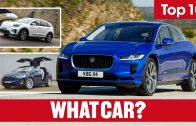Top 3 Test Driving Mistakes New Car Buyers Make | Auto Expert John Cadogan | Australia
So: You’re test driving a new car. Don’t make these classic mistakes.
Welcome to another episode of What the FAQ – the segment where I oxygenate your most common questions.
This episode is inspired by the dissertations – the boxed sets, with director’s commentaries – I get, twice, sometimes thrice, each week, in which someone, perhaps you, sends me a highly detailed brain fart dressed up as a road test report. Their road test report. Detailed driving impressions.
And I mean ‘detailed’. 3000 words, and no punctuation. The education system leaves too many people behind… And often they’re painted on a sweeping Technicolor backdrop of ‘Yaris versus LandCruiser – please help me decide.’ So that’s interesting.
There’s really three mistakes for the test-drive obsessed new car buyer. Let us exorcise them and cast these demons back into the pit of hell.
People overstate the importance of test-driving impressions. Grossly. Look, if you’re a complete car nut (something I can certainly relate to) then driving impressions are important to you. I get that.
But if you are a mainstream car buyer, it’s the 21st Century. If you take the most popular segments – the small cars, the medium SUVs, the 4X4 utes … they all drive very similar (within the segment – obviously utes don’t feel the same as small cars – but all the top utes feel very similar, and so do all of the best small cars).
You can call bullshit on this if you want – and I can already hear car enthusiast nuts doing this all over town – but all carmakers benchmark every new car against the leading competitors.
The entire aim is to get close, or a little bit ahead on each key criteria. The present these analyses at press conferences during the launch. This is why, dollar for dollar, cars in the same category are increasingly trending towards becoming clones of one another.
And yeah, there are driving differences, but they’re generally not critical differences in the context of ordinary owners and what they should buy. Certainly the differences in the driving experience of common leading competitors is not as important to the purchasing decision, overall, as other factors.
I’m talking here about factors like the equipment levels, the value, the safety credentials, and the parent company’s ethical compass – should you find yourself in the unfortunate position of having a real problem and needing considerable support.
In this situation it makes a helluva difference if you’re dealing with a Subaru, Mazda, Hyundai, Kia or BMW (all pretty good) as opposed to a Jeep, Volkswagen, Mercedes-Benz, Holden or Ford (all pretty reprehensible).
People blow the importance of the drive experience completely out of the water – and typically this is a male Achilles heel. The reality is: Among the leaders in every mainstream segment, there’s just not enough difference in the drive experience to swing the decision one way or the other. You have to put the drive in perspective, or you’ll end up buying the wrong car.












